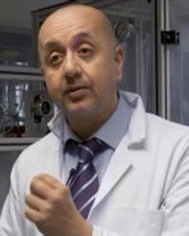 Open Access Article
Open Access ArticleCreative Commons Attribution 3.0 Unported Licence
Advanced functional materials and manufacturing processes
Jessica O.
Winter
 *a,
Jawwad A.
Darr
*a,
Jawwad A.
Darr
 *b and
John
Wang
*b and
John
Wang
 *c
*c
aWilliam G. Lowrie Department of Chemical and Biomolecular Engineering, Department of Biomedical Engineering, 151 W. Woodruff Ave., Columbus, OH 43210, USA. E-mail: winter.63@osu.edu
bDepartment of Chemistry, University College London, 20 Gordon Street, London, WC1H 0AJ, UK. E-mail: j.a.darr@ucl.ac.uk
cDepartment of Materials Science and Engineering, National University of Singapore, 9 Engineering Drive 1, 117575 Singapore. E-mail: msewangj@nus.edu.sg
Advanced functional materials (AFMs), including nanoparticles of AFMs, play an important role in catalysis, optoelectronic and quantum materials, biomaterials, and energy harvesting, storage, and conversion materials. AFMs can be designed, synthesized, or modelled to possess different arrangements, and therefore can possess a wide range of properties. For example, using additive manufacturing or electrospinning processes, nanoparticle/cluster attributes such as bulk and/or defect structures and surface properties can be varied. AFMs can be further consolidated into larger hierarchical arrangements with specific nano-/micro-structures or surface characteristics that can impart new or unexpected functionality. However, discovering and translating AFMs from the bench to commercial products can be challenging.
Discovery synthesis approaches for new AFMs require materials to be made faster and more consistently, so that their properties can be compared within compositional space. Furthermore, during any subsequent scale-up, replicating properties can pose a number of challenges. Scale-up can result in inhomogeneous mixing and uneven mass and heat gradients that influence material function. Structure–property-composition relationships can be strongly dependent on manufacturing method (e.g., thermodynamic vs. kinetic limitations). Consequently, there is a need to better understand the relationship between materials synthesis and consolidation parameters at different length scales in order to control and obtain the desired functional properties.
This themed issue explores the latest developments in advanced inorganic functional materials synthesis, modelling, and simulation, including novel manufacturing processes, scale up approaches, and property evaluation and optimization. One area in which AFMs have high potential is in the area of electrochemical energy storage. Battery materials require precise placement of components in a semi-porous matrix to maximize energy storage and transfer performance. Materials manufacturing and processing are crucial to the Structure–property-composition relationships of these materials.
This collection highlights both anode and cathode materials development for Li- or other metal based batteries, including potential of Ca-based materials. In Dong et al., a dual cation substitution process is used to turn disordered rock salt into Li1.2Ni0.4Mo0.2Mg0.2O2 materials suitable as cathodes (https://doi.org/10.1039/D2MA00981A). These materials demonstrated a discharge capacity of 195 mA h g−1 over 10 cycles, alternating between disordered and ordered structures with cycling. Xu et al. address a correlated problem on the anode side in Li4Ti5O12 materials (https://doi.org/10.1039/D2MA00741J). Such materials are promising as anode materials; however, high reactivity reduces their efficacy. They examine the use of additives, particularly fluoroethylene carbonate, as stabilizers in the electrolyte to improve usability of lithium anode materials. This additive suppressed aluminum corrosion within the half-cell, enabling capacity retention of up to 64% after 10![[thin space (1/6-em)]](https://www.rsc.org/images/entities/char_2009.gif) 000 cycles at 2 °C. Despite these improvements, Li-ion batteries present risks, most notably fire hazards. Tinker et al. review the state-of-the-art of Ca-ion battery alternatives (https://doi.org/10.1039/D2MA01034H). Ca-ion batteries offer great promise to move beyond Li materials, and this review outlines the challenges that need to be surmounted in order to realize their potential.
000 cycles at 2 °C. Despite these improvements, Li-ion batteries present risks, most notably fire hazards. Tinker et al. review the state-of-the-art of Ca-ion battery alternatives (https://doi.org/10.1039/D2MA01034H). Ca-ion batteries offer great promise to move beyond Li materials, and this review outlines the challenges that need to be surmounted in order to realize their potential.
AFMs are also making great strides in environmental applications. Yang et al. explore UiO-67(Zr) metal oxide frameworks (MOFs) as supports for amino-polymers useful for carbon capture (https://doi.org/10.1039/D2MA01020H). The unique structure of the MOF materials, combined with internalized polymers, permitted direct from air capture of CO2, while stabilizing the polymers against degradation. The polymer loading-mass transfer studies in this work provide important guiding principles for further development of MOF-supported carbon capture materials. From CO2 capture to degradation to CO2, Iborra-Torres et al. explore the use of 3D printed perovskite-like materials for treatment of aqueous organic pollutants (https://doi.org/10.1039/D2MA01076C). In their report, the photocatalytic properties of SrNbO2N result in the generation of reactive oxygen species that rapidly oxidize organic materials toward CO2 constituents. The report combines experiment and theory to show that aromatic nitrogens in the methylene blue model organic pollutant, interact most strongly with electrons generated in the perovskite-like material. The 3D printed structure provides precise manufacturing capabilities and easy recovery compared to dry powders.
Health applications also benefit from the precision control of AFMs. In particular, nanomaterials are used to encapsulate and deliver drugs, which is an area of increasing interest in the pharmaceuticals market. Paul et al. review nanomaterials for encapsulated drug delivery across an array of disease conditions, providing a broad overview (https://doi.org/10.1039/D2MA01075E). Then, Beri reviews silicon quantum dot nanomaterials for bio-imaging (https://doi.org/10.1039/D2MA00984F). Such materials offer many advantages for imaging, including bio-compatibility, ease of synthesis, and ability to be combined with photothermal therapy for theranostic treatments. Their review also discusses crossover of such materials into other optoelectronic applications, showing the versatility of AFMs across various fields. Demonstrating this versatility, Liu et al. present nanozymes for peroxidase-mediated biodetection (https://doi.org/10.1039/D2MA00844K) via similar MOF supports to those reported in this themed issue by Yang et al. for CO2 capture. Here, UiO-66 MOFs are used to support gold nanoparticles with peroxidase-like activity. The gold particles were grown in situ in MOF templates, permitting size control and generating an even distribution. These materials could detect glucose, dopamine, and thiol ions via catalytic reaction via gold using 3,3′,5,5′-tetramethylbenzidine (TMB) as a reporter with sub-millimolar limits of detection.
These material developments rely on concomitant advances in manufacturing processes. Materials can be manufactured from top-down or bottom-up processes, with much recent interest in bottom-up manufacturing via self-assembly or additive manufacturing. Lin et al., (https://doi.org/10.1039/D3MA00021D) reviews the current state of the art of nanomanufacturing for micro/nanoparticles for delivery of biologics. In Vigil et al., fundamental studies of a silicatein enzyme provide guidance on its use for biomineralization materials manufacturing (https://doi.org/10.1039/D2MA00938B). Silicatein is a natural enzyme found in marine organisms that can be used to generate silica and ceria bio-inspired materials via self-assembly. However, for silicatein to be made via an effective manufacturing route, its solubility and yield must be increased. This work describes optimal conditions and enzyme design to achieve maximum silicatein activity, providing an important advance toward its manufacturing potential. Apart from bio-inspired self-assembly, additive manufacturing is rapidly becoming a cornerstone technique for producing AFMs. Additive manufacturing “ink” materials are printed onto a substrate where they can be cured by exposure to light or other stimuli. For AFMs, polymer ink resins are often combined with other materials, e.g., nanoparticles or powders, to obtain the desired structural properties. Wang et al. examine composites derived from thermosetting elastomers, determining the role of wetting in composites with a high degree of particulate loading (https://doi.org/10.1039/D2MA00892K). This report teaches that wettability of the resin is a critical component in obtaining materials with high strength, highlighting the importance of interfacial energy in forming AFMs.
This collection provides important guidance on the design and fabrication of AFMs. Such materials can be applied across a diverse range of fields. Here, we highlight applications in energy storage, environmental engineering, and healthcare, but many other applications are possible. Further progress in manufacturing techniques would enable translation of these materials toward commercial products and create routes to materials with increasingly complex structures, representing the next horizon in this field. As AFMs mature, they will enable transformational advances spanning many fields through their power to combine multiple components into synergistic constructs.
| This journal is © The Royal Society of Chemistry 2023 |



